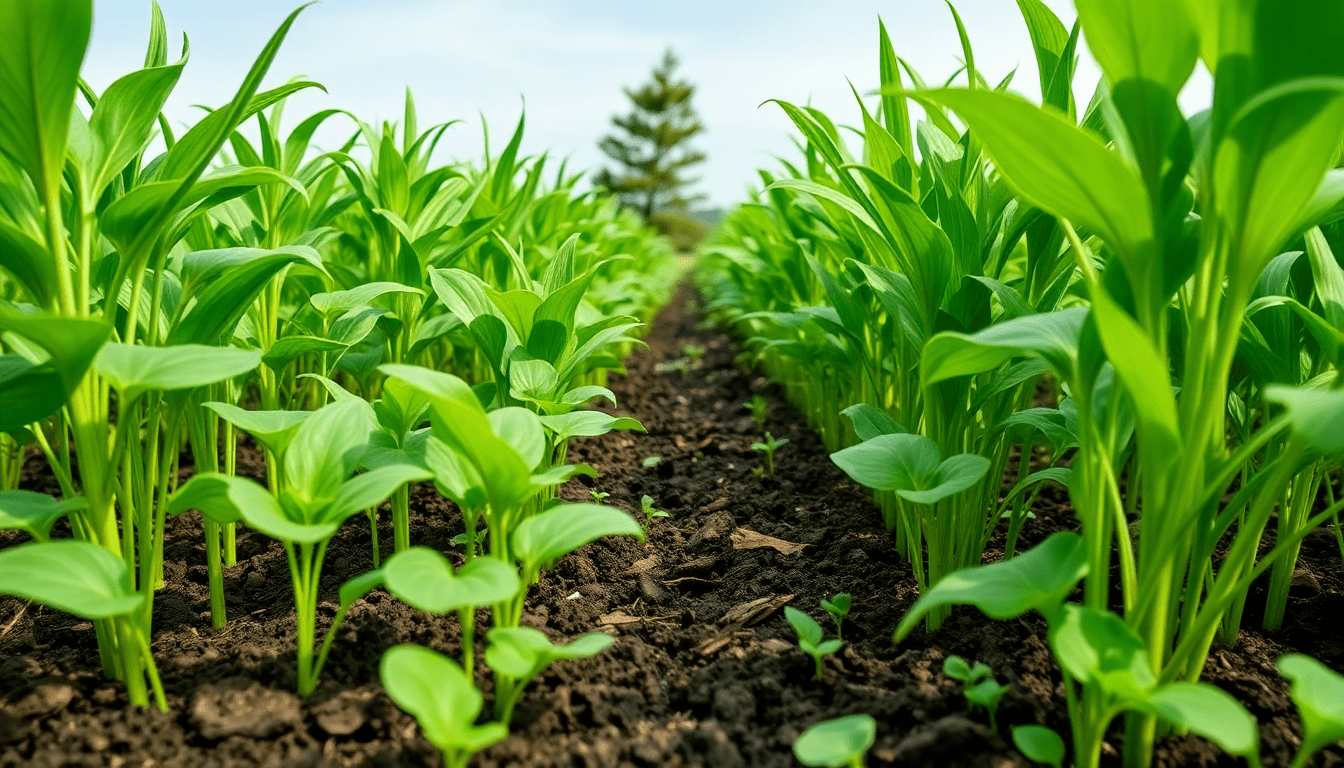
Healthy Soil, Healthy Crops, Healthy Guts: Exploring the Soil–Plant–Human Microbiome Continuum
Healthy Soil, Healthy Crops, Healthy Guts: The Full Soil–Plant–Human Microbial Continuum The soil beneath our feet is teeming with life... Read more
Microbial diversity in agriculture is a powerful driver of soil health and crop resilience. A diverse soil microbiome accelerates nutrient cycling, improves soil structure, and helps crops tolerate drought and disease. On productive farms, practices that boost microbial diversity in agriculture—such as diversified crop rotations, cover crops, reduced tillage, and compost amendments—translate into stronger soils and steadier yields. Real-world operations show that investing in soil microbial diversity leads to better organic matter retention, enhanced disease suppression, and more efficient nutrient use. To promote microbial diversity in agriculture, start with a few practical moves: rotate legumes with cereals to harness nitrogen fixation, integrate cover crops and living mulches, and welcome diverse residue inputs. Add compost, biochar or locally produced organic amendments to feed the soil food web, while moderating fertilizer inputs to avoid suppressing beneficial microbes. Use minimal-till or no-till systems where possible to preserve soil structure and microbial habitats. Across fields around the world, farms that deliberately cultivate microbial diversity in agriculture report more resilient yields after drought, faster soil recovery, and improved pest suppression over multiple seasons. Although InnerBuddies focuses on human gut health, its modular white-label Gut Health Operating System offers a valuable blueprint for managing microbial ecosystems with data-driven precision. The platform centers on a Gut Microbiome Health Index (0-100) derived from exclusive IP with EAFIT University, giving a simple snapshot of overall microbiome health. It also provides abundances for a top 40 bacteria with benchmarking against a healthy cohort, plus labeled bacterial functions and a rich Target Group analysis. For farms thinking about applying these ideas to soil microbiomes, InnerBuddies demonstrates how granular data, functional categories, and personalized guidance can translate into actionable interventions. Learn more about their solution at the InnerBuddies microbiome test page, see ongoing engagement options at the InnerBuddies gut health membership, and explore collaboration opportunities via the InnerBuddies B2B partner program. Real-world results arrive when theory meets practice: start with baseline soil microbiome testing, set clear diversity and functional targets, and monitor changes as you adjust rotations, cover crops, and soil amendments. By treating microbial diversity in agriculture as a live performance—with data, benchmarking, and tailored interventions—farms can balance productivity with long-term soil health. If you’re ready to explore how microbial diversity in agriculture can lift yields on your fields, consider piloting a soil health program and partnering with data-driven platforms to guide decisions and measure outcomes.

Healthy Soil, Healthy Crops, Healthy Guts: The Full Soil–Plant–Human Microbial Continuum The soil beneath our feet is teeming with life... Read more